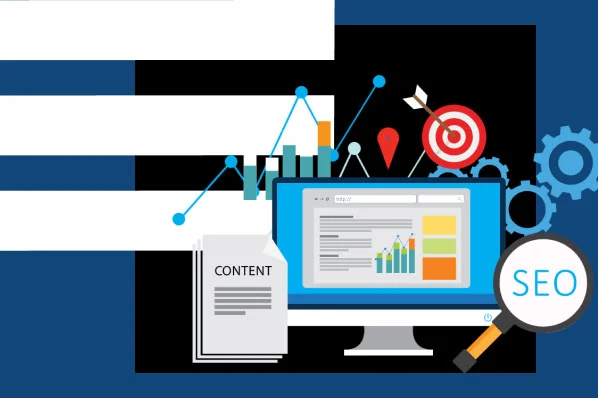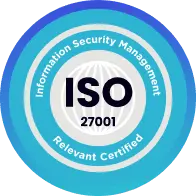In the world of marketing having visibility, without paid promotions is crucial.
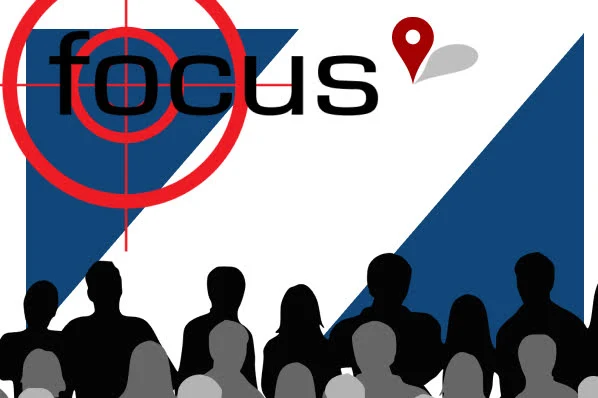
Organic visibility refers to the ranking of a website or content in search engine results pages (SERPs) based on its relevance and quality when someone searches for something. It’s important to understand the value of visibility because it helps attract visitors and generate valuable leads. If you’re looking for ways to increase your website’s traffic without spending a fortune you’ve come to the place. We provide strategies that not only improve your click through rate but also boost your ranking in search engines. Unlike paid traffic, organic traffic doesn’t cost anything. Is sustainable over time. To get started on this journey it’s essential to understand the differences between paid searches.
At the core of visibility lies Search Engine Optimization (SEO). In today’s era most people rely on sources before making purchasing decisions. SEO enables you to enhance your websites ranking and visibility in SERPs (SERPs is an abbreviation best known in the digital marketing community as “Search Engine Results Pages“) making it an indispensable tool for success online.
To reach your SEO objectives and boost the amount of traffic to your website partnering, with a discovery solution can bring significant advantages.
In the sections we will present you with top notch SEO techniques that are specifically crafted to enhance your websites performance.

What Does “Organic Search” Mean?
Organic search refers to the natural, unpaid listings that populate a search engine’s results page (SERP). These listings are determined by various factors, including their relevance to the user’s search query, the presence of incoming links, effective search engine optimization (SEO) practices, and the domain’s authority. Unlike paid search results, commonly known as pay-per-click advertising, organic search results do not involve advertisers purchasing placement.
Instead, website owners employ strategies that align with SEO best practices, often referred to as ethical or organic SEO. The primary goal is to improve a website’s position on the SERP without resorting to unethical tactics or paying for placement. These discouraged practices can include techniques like keyword stuffing, which is considered unethical in SEO.
The positioning of a link on a search results page holds great significance. In many cases, organic search results only occupy a small portion of the page, particularly when search ads are present at the top of the results page. On devices with limited display space, such as laptops, tablets, or smartphones, users may see just one or two visible organic search results.
Why Organic Search Matters
While paid advertising can deliver immediate results, organic search strategies offer a valuable long-term perspective. Organic search traffic serves as the primary source of visits for most websites and plays a pivotal role in the buyer’s journey, leading to increased conversions and a higher return on investment (ROI).

The significance of organic search can be summarized through the following key attributes:
- Competitive Edge:
An organic search strategy enhances a business’s visibility for targeted keywords. When pursued vigorously, organic search traffic can propel a company ahead of its competitors in search engine rankings, without the need for substantial investments in paid or digital marketing strategies. For instance, a business that boosts its organic search traffic effectively climbs the search engine ranks, effectively pushing competitors down the list.
- Cost-Effective and Scalable:
Organic search offers a cost advantage over paid advertising. While pay-per-click ads guarantee immediate visibility, they can become cost-prohibitive over time. Organic traffic, especially when backed by sound SEO principles, comes at no cost. Moreover, organic strategies are more scalable as they don’t demand upfront investments or extensive maintenance budgets. Businesses can expand without continually increasing their marketing expenses.
- Long-Term Results:
Organic search strategies optimize a company’s presence on search engines over an extended period. They aren’t reliant on cost-per-click or monthly expenditures, ensuring consistent, sustainable outcomes.
- Highly Targeted:
Effective SEO strategies ensure a company’s website surfaces when consumers are actively searching for keywords closely related to the industry. Websites ranking for relevant keywords attract regular, targeted traffic, nurturing new leads and long-term customer relationships.
Organic vs. Paid Search
While the primary distinction between organic and paid search lies in cost, several other factors set them apart:

Organic Search:
- Focuses on improving unpaid search rankings.
- Positions search results in the middle of the page.
- May require substantial effort to attain top-page rankings.
- Yields more enduring results compared to paid search.
- Comes at no monetary cost for investment.
- Necessitates consistent maintenance of SEO strategies.
Paid Search:
- Concentrates on boosting paid search engine rankings.
- Places search results at the top of the page.
- Enables swift top-ranking with payment.
- Halts traffic flow when the advertising campaign concludes.
- Involves upfront and ongoing maintenance costs.
- Offers short-term outcomes.
In addition to organic and paid traffic, various other traffic sources on search engines include:
- Direct: This traffic source lacks a specific attribution and originates from unknown origins.
- Email: Traffic is generated through email marketing efforts.
- Social: Traffic emanates from social media networks, often driven by social media marketing campaigns.
Factors Affecting Organic Search Rankings
 Every business aspires to see its online content grace the top pages of search engine results, especially on Google. Achieving this coveted position involves navigating through various ranking factors that include optimized keywords, alignment with Google algorithms, and content quality. Let’s delve into the key elements that influence a website’s organic search ranking.
Every business aspires to see its online content grace the top pages of search engine results, especially on Google. Achieving this coveted position involves navigating through various ranking factors that include optimized keywords, alignment with Google algorithms, and content quality. Let’s delve into the key elements that influence a website’s organic search ranking.
- Link Structure:
Internal and External Links: Content gains visibility in search engines when it’s linked internally and externally. Internal links guide users to different sections of a website, providing insight into its structure and hierarchy. Meanwhile, external links direct readers to external websites. While it may seem counterintuitive, outbound links to reputable sources can enhance a website’s ranking by indicating the content’s context and credibility from an SEO perspective.
Backlinks, also known as inbound links, are links from third-party websites to a company’s site. These backlinks help search engines gauge a website’s relevance to specific search queries. For instance, if a company’s informative blog post serves as a reference for another website’s article, it can generate a valuable backlink. A robust backlink structure can improve organic search rankings, drive targeted referral traffic, and expedite the indexing of a website by search engines.
- Technical Factors:
Page Speed: The time it takes for a web page to load, known as page speed, is a pivotal SEO ranking factor. Faster loading websites tend to rank higher as they offer a better user experience (UX).
URL Length: The length of a URL can impact search engine rankings. Shorter URLs typically fare better in search results and are easier for users to type and remember, enhancing overall UX.
- Content Quality and Structure:
The quality and structure of content play a central role in SEO rankings. Original, well-written content that offers valuable information aligned with user intent tends to rank higher. High-quality blog posts, for example, not only appeal to search engines but also engage consumers, reducing bounce rates and increasing user engagement on a website.
- Media Enhancements:
Media elements such as videos and images provide SEO benefits that enhance organic content rankings in SERPs. Images and videos add context to written content, prolonging user engagement and increasing the likelihood of conversions and higher pageviews per visit. They also break up textual monotony, making information easier to digest for readers.
- Mobile Optimization:
Websites optimized for smaller screens and mobile devices enjoy higher search engine rankings because an increasing percentage of searches occur on mobile devices. As of July 2023, mobile purchases account for 64.06% of the market share, compared to 39.94% for desktops (StatCounter). Responsive web pages offer superior UX, whereas unoptimized sites that are difficult to navigate on mobile devices lag behind in search engine rankings.
- Encryption:
With changing attitudes toward encrypted internet communications, mainstream browsers now favor HTTPS, which exclusively loads pages through secure connections. Many websites, however, still rely on the older HTTP protocol and lack Secure Sockets Layer (SSL) certificates. This has a substantial impact on search engine rankings, as insecure websites display a “Not Secure” warning in the browser bar, potentially deterring site visitors. Google places value on encrypted sites, so acquiring an SSL certificate can boost a website’s search engine ranking.
Enhancing Organic Search Performance: Key Metrics to Track
To unlock the full potential of organic search traffic and revenue, businesses must establish a solid foundation of website tracking. This essential practice illuminates opportunities for growth in search engine rankings and Return on Investment (ROI). By embracing website metrics, businesses can gain valuable insights into their site’s performance and take strategic steps to improve it.
This essential practice illuminates opportunities for growth in search engine rankings and Return on Investment (ROI). By embracing website metrics, businesses can gain valuable insights into their site’s performance and take strategic steps to improve it.
Here are the pivotal organic search reporting metrics that businesses should regularly monitor:
Keyword ranking reveals where a website stands in the organic search results for specific keywords. Tracking these rankings is essential to assess the effectiveness of an organic SEO strategy. To secure top positions in search engine results, websites must optimize their content for a mix of specific and long-tail keywords. Businesses should identify their most crucial keywords and channel their efforts into achieving high rankings for them. Google Analytics and various Search Engine Results Page (SERP) trackers prove invaluable in tracking keyword metrics effectively.
- Number of Visitors:
The number of visitors quantifies the overall interest in a website and its content. A low visitor count suggests underperformance, signaling the need for compelling content improvements. To boost search engine rankings and attract more traffic, businesses should focus on creating engaging content that resonates with their target audience.
- Average Page Views:
Average page views per session and the total number of pages accessed by a visitor offer a comprehensive view of a website’s performance. This metric serves as a quick gauge to assess a website’s effectiveness. For instance, a high exit rate after viewing only one or two pages may indicate navigation difficulties or irrelevant content. Addressing these issues can enhance the overall user experience.
- Bounce Rate:
Bounce rate reflects the percentage of visitors who leave a website without exploring additional pages. Various factors contribute to a high bounce rate, such as slow page loading times or insufficient information, products, or services. A high bounce rate can negatively impact a website’s search engine ranking. Therefore, businesses should analyze pages with high bounce rates to enhance content and retain visitors.
- Average Time on Page:
The average time visitors spend on each page provides valuable insights into content engagement and audience interest. Prolonged visit durations on specific pages signify valuable, engaging content. Conversely, shorter time spans on certain pages indicate content issues or irrelevance to visitors’ needs. Tracking this metric empowers businesses to refine content and deliver a more compelling user experience.
To make your life easier, we have a “Mastering On-Page SEO: A Comprehensive Guide to Boosting Your Website’s Visibility and Ranking”, there’s even an Seo Optimization page checklist template and an Seo blog post template! Follow the link and get it for free!
Mastering On-Page SEO: A Comprehensive Guide to Boosting Your Website’s Visibility and Ranking
Chapter 1: Conducting Keyword Research

Before embarking on any of the steps outlined in this guide, it is imperative to initiate the process with comprehensive keyword research. Without a clear understanding of the keywords you are targeting, the subsequent steps become ineffective. Here are some crucial tips for conducting effective keyword research:
- Focus on Blog Posts: Your blog posts are the primary target for keyword optimization and on-page SEO. Therefore, your keyword research should be tailored to match the content of your blog posts.
- Utilize Keyword Research Tools: Make use of reliable keyword research tools to identify keywords that have a decent search volume and low competition. These tools will provide valuable insights into the keywords relevant to your content.
- Target One Keyword or Theme per Page: It is advisable to concentrate on one keyword or keyword theme per page. Attempting to optimize for multiple keywords on a single page can lead to competition within the search engine results pages (SERPs).
- Ensure Alignment with User Intent: Google your selected keywords to understand the user intent associated with them. If your content does not align with the intent of the targeted keyword, your chances of ranking will be diminished.
Chapter 2: Prioritizing Content Quality
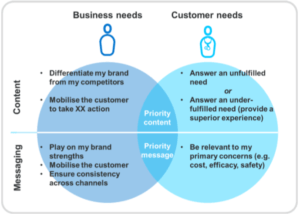
High-quality content is the foundation of effective on-page SEO. Google defines thin content as content that lacks authenticity and provides minimal value. To ensure your content is considered substantial and valuable, adhere to these key principles:
- Trustworthiness: Your content should deliver accurate information that aligns with the promise made in the headline. Readers should trust the information you provide.
- Usefulness: Your content should offer information that users are seeking when they search for the targeted keyword. It should address their needs effectively.
- Actionability: Ensure that your content provides practical guidance. Use a “how-to” approach when necessary, even if it involves linking to additional resources.
- Readability: Organize your information logically, utilize headers for easy scanning, make your content feel human-written, and break up the text with images, bullets, quotes, and other visual elements.
- Adequate Length: For blog posts, aim for a minimum of 1,500 words. While Hubspot recommends 2,100-2,400 words based on its top-performing blog posts, always prioritize content quality over length.
- Eliminate Fluff: Avoid using unnecessary words that add little value to your content. Make every word count to maintain reader engagement.
Chapter 3: Effective Keyword Placement

While high-quality content naturally incorporates keywords, there are specific areas where you should intentionally place your target keyword:
- Page Title: Craft a page title that includes the target keyword.
- Title Tag: Ensure the title tag, as it appears in the SERPs, contains the keyword.
- First 100 Words: Integrate the keyword naturally within the first 100 words of your page’s content.
- Headings: Ideally, include the keyword in at least two H2 headings on the page.
- Meta Description: Craft a meta description for your page that includes the keyword and provides a brief summary of your content.
- Image Alt Text: Add descriptive alt text to images that includes the keyword.
- Image File Name: Name your image files with the keyword and replace spaces with dashes or underscores.
Chapter 4: Optimizing Images
Images play a vital role in on-page optimization as they enhance user engagement and contribute to time spent on a page. To optimize images effectively, follow these guidelines:
- Optimize for Speed: Resize images to fit the maximum width of your page, compress them to reduce file size without compromising quality, and consider using a content delivery network (CDN) for large websites.
- Add Alt Text: Include descriptive alt text for images that incorporates the targeted keyword. Alt text is essential for SEO and accessibility.
- Convey Value: Use images to illustrate concepts on your page, such as graphs, screenshots, and custom illustrations, rather than relying on decorative graphics.
- Avoid Replacing Text with Images: If an image conveys information relevant to the targeted keyword, ensure the same information is presented in the page’s text.
- Optimize Filename: Name image files with the target keyword and replace spaces with dashes or underscores to enhance SEO and trustworthiness.
Chapter 5: Crafting Effective Titles
Titles are crucial for SEO and user engagement. Two types of titles are essential for any web page:
- Title Tag (Meta Title): This title appears in search results. Ensure it is 60 characters or less, includes the target keyword, and front-loads the keyword to prevent truncation on smaller screens.
- H1 Tag: The H1 tag serves as the title visible to readers when they access the page. While it allows more creativity, it should still contain the keyword.
A strong title should:
- Convey Value: Clearly indicate the benefits to readers.
- Avoid Overpromising: The title should accurately reflect the content.
- Be Descriptive: Ensure clarity in the title.
- Be Interesting: Engage users without resorting to excessive caps or hyperbolic language.

Chapter 6: Leveraging Heading Tags
Heading tags organize page content into clear sections and subsections while conveying the hierarchy of information to both users and search engines. Utilize six types of heading tags:
- H1: The primary title of the page, limited to one per page.
- H2: Main section headings, featuring keywords where relevant.
- H3: Subheadings for further segmentation of content.
- H4 to H6: Less significant headings, used sparingly.
Descriptive headings enable Google to associate your page with more specific search queries, increasing visibility.
Chapter 7: Crafting Meta Descriptions
Meta descriptions serve as the snippet under the page title in search results. Crafting effective meta descriptions is vital for attracting clicks. Follow these guidelines:
- Maintain a length between 155-160 characters.
- Include the target keyword and related keywords if relevant.
- Make it actionable, emphasizing the benefit to readers.
A well-written meta description entices users to click through to your page by offering valuable information.
Chapter 8: Optimizing URLs
Edit your page’s URL to optimize it for SEO:
- Include the target keyword.
- Use dashes instead of spaces.
- Keep it concise; the keyword alone is often sufficient.
Well-structured URLs enhance search engine visibility and user understanding of the page’s content.
Chapter 9: Linking Strategies
On-page SEO involves two types of links:
- External Links: These link to other domains. Link to high-domain-authority websites related to your topic to build trust.
- Internal Links: Link to other pages within your website, and ensure that other pages link to the page you are optimizing. Use keyword-specific anchor text for both types of links.
Effective linking improves your site’s authority and helps users navigate your content seamlessly.
Chapter 10: Technical Optimization
Consider a few technical optimizations to ensure your page’s performance and accessibility:
- Mobile-Friendliness: Ensure your page is responsive and functions well on mobile devices.
- Crawlability: Check that your page is indexed, as non-indexed pages cannot rank. Use tools like Google Search Console to troubleshoot.
- Social Share Buttons: Include social share buttons to encourage content amplification.
- Page Speed: Optimize page speed, as it is a ranking factor. Resize and compress images and use PageSpeed Insights to improve load times.
Chapter 11: Content Freshness
Regularly update the content of your page to maintain its value. Refreshing content can involve adding new information, updating links.
- Add new information or data.
- Include links to recent, related content.
- Replace outdated images or visuals.
- Verify that user intent for the target keyword hasn’t changed.
Content freshness keeps your page competitive and maintains its SEO effectiveness.
On-page SEO checklist template

SEO blog post template
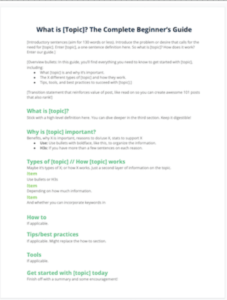
By following this comprehensive on-page SEO guide, you can optimize your web pages effectively, improve search engine rankings, and provide valuable experiences to your audience. Remember that SEO is an ongoing process, and staying updated with industry trends is essential for long-term success.
Author
-

Alisha is the Editor-in-Chief of Search Engine Journal. Before that, she covered tech for News & Trends, content editing, and social strategy at AdClickAgency. Alisha holds a BA in English and Journalism from Mount Holyoke College and an MBA in Marketing from San Francisco State University. Her work has also appeared in Thrillist, the Boston Herald, and EcoSalon, and she's based in St. Petersburg, Florida.
View all posts




